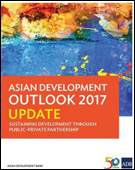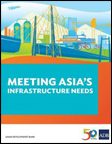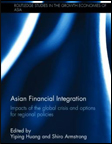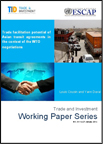 Asian Development Outlook (ADO) 2017 Update: Sustaining Development through Public-Private PartnershipDeveloping Asia is forecast to expand by 5.9% in 2017 and 5.8% in 2018, a slight upgrade from projections in the Asian Development Outlook 2017. However, growth forecast for South Asia is downgraded to 6.7% in 2017. India’s growth remains strong and most South Asian countries are expected to meet or exceed growth forecasts from April. Exceptions are Sri Lanka, where agriculture was affected by drought and floods, and Bhutan, where geological problems have constrained construction on two large hydropower projects. Growth in Nepal surged in 2017 on earthquake recovery but is slowing as agriculture struggles, following severe flooding in August 2017. Inflation forecast in South Asia is lowered to 4.2% for 2017 and 4.7% for 2018. Favorable global commodity prices, good harvests, and prudent macroeconomics are expected. Author: Asian Development Bank Year: 2017 Download Tags: Asia, Development, Sustainability, Public Private Partnerships, South Asia, India, Sri Lanka, Agriculture, Bhutan, Hydropower, Energy, Nepal  Meeting Asia's Infrastructure NeedsThis report estimates infrastructure investment needs in Asia and the Pacific for 2016-2030, updating the Asian Development Bank's assessment for 2010-2020 published in 2009. The report places developing Asia's investment needs at $26 trillion to maintain its growth momentum, eradicate poverty, and respond to climate change. While developing Asia's infrastructure, including its transport network and electricity generation capacity, has improved significantly over the years, it remains far from adequate – lack of reliable power supply continues to constrain economic growth and traffic congestion results in lost productivity, wasted fuel, and human stress. The report recommends $14.7 trillion investment for power and $8.4 trillion for transport. South Asia requires investments valued at 8.8% of gross domestic product. Author: Asian Development Bank Year: 2017 Download Tags: Asia, South Asia, Energy, Transport, Bangladesh, Bhutan, ADB, India, Maldives, Myanmar, Sri Lanka, Nepal Asian Development Outlook 2016: Asia’s Potential GrowthThe Asian Development Outlook 2016 forecasts 5.7% growth for developing Asia in 2016 and 2017. It projects that South Asia will post the most rapid growth in developing Asia, with growth in the subregion accelerating to 7% in 2015, and will accelerate further to 7.3% in 2017 after a slight dip to 6.9% in 2016. India's growth is expected to undergo a slight slowdown to 7.4% in 2016 as exports decline and both public and private investment slows, but rebound to 7.8% in 2017 as the business environment improves, and exports and investment recover. Bangladesh will also see continued moderate growth, resulting from sustained progress toward macroeconomic and structural reform. Author: Asian Development Bank Year: 2016 Download Tags: Asia, India, Bangladesh, Economic Growth, Development, ADB World Trade Organization Annual Report 2015The World Trade Organization (WTO) Annual Report 2015 provides an overview of WTO activities in 2014 and early 2015. It presents a timeline of two decades of the WTO -- from its origins succeeding the General Agreement on Tariffs and Trade to its current role in the multilateral trading system. It presents a chapter on how WTO helps developing countries build trade capacity and allows them to implement trade agreements. WTO training courses are organized for officials from developing countries each year. Author: World Trade Organization Year: 2015 Download Tags: Trade, Trade Policy, WTO, Tariffs, Energy, Bangladesh, India, Nepal, Sri Lanka, Trade Facilitation, Transport, Asia, Agriculture Future of Factory AsiaThis volume, co-published by the Asian Development Bank and the Korea Economic Research Institute, reflects one of the broad thematic sessions of the Seoul conference, Beyond Factory Asia. It assesses the challenges and sustainability of the Factory Asia model – supplying from the East and consuming in the West – and provides suggestions and strategies on effective management of these concerns. The volume further analyzes obstacles in the success of Factory Asia, its speed in expanding its own domestic and regional markets, and its progress in upgrading competitiveness in the manufacturing sector. The new Factory Asia must nurture new sources of growth in the region and focus on regional economic integration. Author: Choi Byung-il and Changyong Rhee (eds.) Year: 2014 Download Tags: Economic Integration, Asia-Pacific, Trade Policy, ADB, Asia, Manufacturing, Regional Integration, Bangladesh, Energy, Sri Lanka, Transport  Asian Financial Integration: Impacts of the Global Crisis and Options for Regional PoliciesThe impact of the global financial crisis (GFC) reverberated deeply throughout the financial markets of Europe and the United States. In contrast, due to its relative independence from global financial markets at that time, Asia was sheltered from its painful blow. As the GFC fast-tracked the growth of Asian economies, thrusting them to the center and leading the global recovery, questions about Asia's financial future come up: how can Asian growth and development continue? This book reviews lessons learned from the GFC and looks at important Asian policy responses to the crisis, including capital account liberalization in India. It also attempts to provide a road map for the future, discussing how Asia can strengthen regional institutions and cooperate, while undertaking domestic reforms consistent with the regional and global agenda, and by proposing strategies for financial integration in the region. Author: Yiping Huang and Shiro Armstrong (eds.) Year: 2014 Download Tags: Regional Integration, Economic Integration, Asia, Europe, India  Trade Facilitation Potential of Asian Transit Agreements in the Context of the WTO NegotiationsFreedom of transit is an issue critical to landlocked developing countries whose lack of direct access to the sea has increased costs and lessened their competitiveness in international trade. To meet challenges arising from transit barriers, member states of the United Nations Economic and Social Commission for Asia and the Pacific recommend transit facilitation as part of an integrated approach to trade facilitation.
This working paper analyzes freedom of transit and transit facilitation in the context of trade and transport agreements in the Asia Pacific region, identifying good practices and weighing in on the extent to which existing agreements meet the provisions on transit facilitation stated in the draft text of the World Trade Organization Agreement on Trade Facilitation. Author: Louis Cousin and Yann Duval Year: 2014 Download Tags: Transport Facilitation, Trade Facilitation, WTO, Asia, UNESCAP, Bangladesh, Bhutan, India, Nepal Evaluating Aid for Trade on the Ground: Lessons from BangladeshThis paper assesses the effectiveness and impact of aid for trade (AfT) in Bangladesh in a series of eight country studies by the International Center for Trade and Sustainable Development. The study argues that the results for AfT are mixed for Bangladesh since it has addressed supply side constraints and contributed to enhancing export competitiveness. However, lack of efficient administrative mechanisms, limited human capacity, and political instability that lead to low absorption capacity limits the overall effectiveness and impact of AfT in Bangladesh. Author: Fahmida Khatun, Samina Hossain and Nepoleon Dewan Year: 2013 Download Tags: Bangladesh, Trade, Aid for Trade, Sustainability, Export, Development, Asia, Gender, LDC, Least Developed Countries Emerging Asian Regionalism-A Partnership for Shared ProsperityThe study summarizes important issues related to Asian regionalism. Viewing regional cooperation as a necessary tool for coping with the consequences of interdependence, the book discusses several pressing issues, such as integrating production, improving financial cooperation, and managing macroeconomic interdependence to create a stable architecture for an Asia-wide cooperation. Author: Asian Development Bank Year: 2008 Download Tags: Economic Corridor, Regional Cooperation, Regional Integration, Asia, ASEAN, SAARC, Bangladesh, Bhutan, India, Nepal, Maldives, Sri Lanka |



